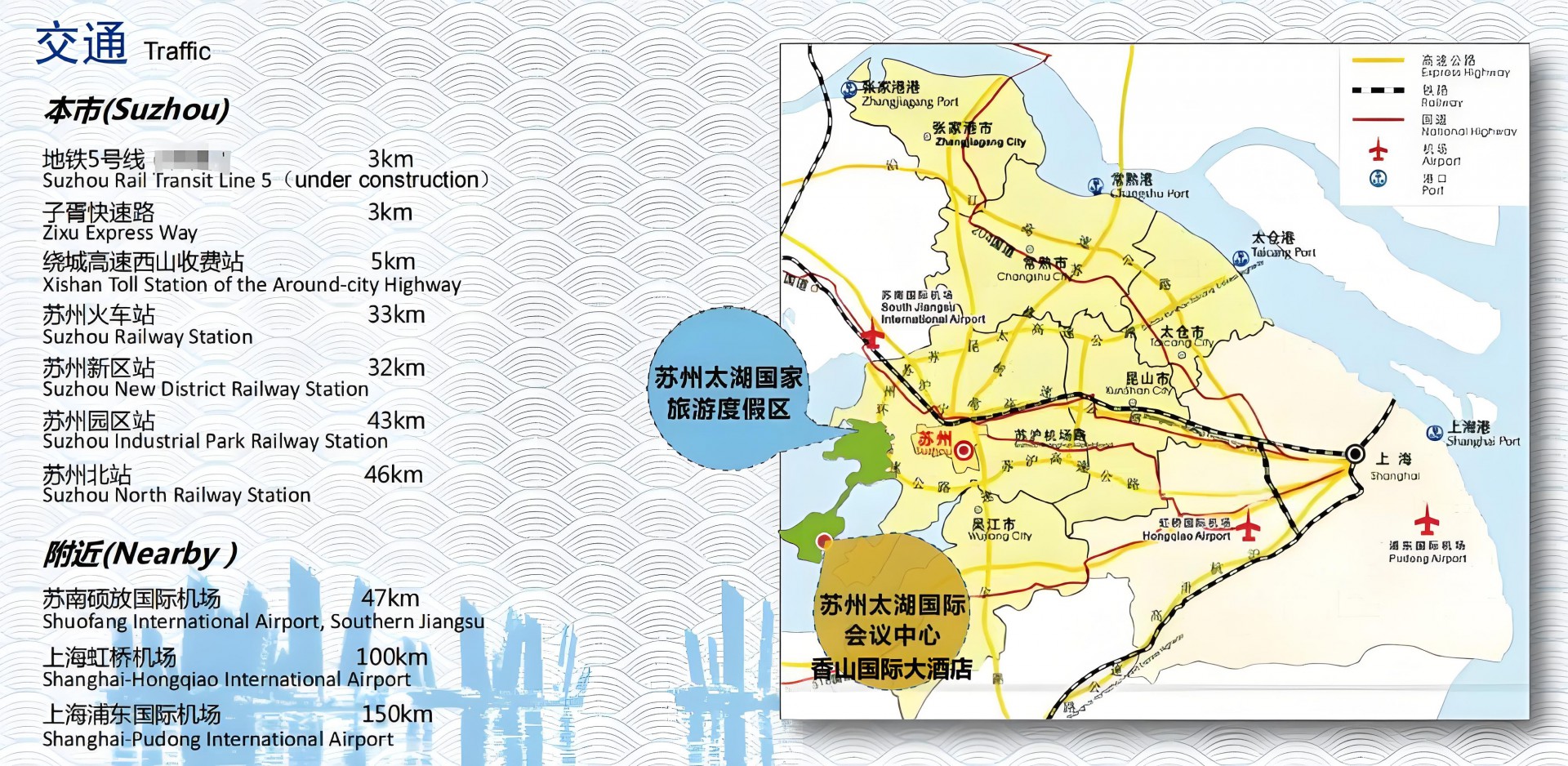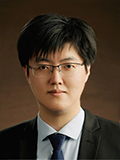
 Walk:5min
Walk:5min

Topic 1: Mathematical and Physical Foundations of Computational Imaging
·Physical Modeling and Information Theory of Imaging Systems
·Optical Transfer Function Theory
·Optical Information Theory and Signal Processing
·Inverse Problem Solving and Optimization Algorithms
·System Performance Evaluation Methods and Standards
·Computational Imaging and Deep Learning Theory
Topic 2: Non-Line-of-Sight and Scattering Imaging
· Complex Medium Light Transmission Control Technologies
· Imaging through Scattering Media
· Non-Line-of-Sight (NLOS) Imaging and Looking Around the Corner
· Adaptive Optics and Wavefront Shaping
· Time-Reversal Imaging
Topic 3: 3D Imaging and Depth Sensing
(This special topic is a joint special topic of the International Conference on Computational Imaging and the International Conference on 3D Visual Perception and Applications.)
· Structured Light 3D Imaging
· Fringe Projection Profilometry
· Photogrammetry
· Photometric stereo vision
· Time-of-Flight (TOF) Imaging
· LiDAR
· Digital Image Correlation (DIC)
· Shape from Defocus
· Phase Measurement Deflectometry
· Rapid 3D imaging technology
· Integrated imaging
· Light Field 3D Imaging
· Deep Learning-based 3D imaging technology
· 3D Imaging and Sensing Technology with Computational Imaging in Interdisciplinary Fields
Topic 4: Polarization Imaging and Event Imaging
· Polarization Parameter Measurement and Calibration
· Polarization-Gated Imaging
· Polarization 3D Imaging
· Polarization Biological Microscopy
· Polarization Target Detection and Recognition
· Polarization Dehazing/Underwater Imaging
· Neuromorphic Imaging and Sensing
· Event-Driven Computational Imaging
Topic 5: Holography and Phase Imaging
· Holographic Interferometric Measurement
· Digital Holography Technology
· Holographic Microscopy
· Quantitative Phase Imaging
· Coherent Diffraction Imaging
· Lensless Imaging
· Iterative Phase Recovery
· Light Intensity Transfer Equation
· Layered Imaging
· Fourier Layered Imaging
· Tomographic 3D Measurement
· Optical Diffraction Tomography
· Coherence Measurement
Topic 6: Multiband and Spectral Imaging
· Infrared/Low-Light-Level Computational Imaging
· Visible/Infrared Image Multimodal Fusion
· Terahertz Computational Imaging
· Microwave/X-ray Computational Imaging
· Aperture Coding Imaging
· Wavefront Coding Imaging
· Synthetic Aperture Imaging
· Computational Multi/High/Hyper-Spectral Imaging Technologies
· Advanced Spectrometer Design
· Spectral Data Processing and Analysis
Topic 7: Single-Photon/Single-Pixel/Quantum Imaging
· Single-Photon Detection Technology
· Fundamental Theory of Correlated Imaging
· Computational Correlated Imaging
· Single-Pixel Imaging
· Quantum Correlated Imaging
· Quantum Tomography Techniques
· Quantum-Enhanced Sensing
Topic 8: Micro/Nano-Optics Computational Imaging
· Multidimensional Light Field Control Based on Micro/Nano-Optics
· Diffraction Optics and Computational Imaging
· Metasurfaces and Metaphotonics
· Computational Imaging Based on Artificial Nano/Micro Structures
· Liquid Lenses and Computational Imaging
· Planar Optical Element Design
· Photoelectronic Integrated Imaging Chips
Topic 9: Biomedical Optical Imaging
· Super-Resolution Microscopy
· Deep-Penetration Microscopy
· Label-Free Microscopy
· Large-Field High-Resolution Mesoscopic Imaging
· Ultrasound/Photoacoustic/Thermal/X-ray Imaging
· Optical Manipulation and Optical Tweezers
· Optical Coherence Tomography
· Optical Tomography
· Magnetic Resonance Imaging
· Wearable/Interventional Imaging
· Cross-Blood-Brain-Barrier Neuroimaging
· Single-Molecule Localization and Dynamic Tracking· Intelligent Surgical Navigation Imaging
Topic 10 (Special Topic): Artificial Intelligence and Computational Imaging
· Artificial Intelligence and Deep Learning Technologies
· Deep Learning-Based Imaging System Design
· Deep Learning-Based Computational Imaging Reconstruction
· Physics-Driven Deep Learning
· Optical Neural Networks
· Optical Computing and Photonic Chips
· Intelligent Imaging Electronics and Detectors
· Big Data/Big Models Supporting Computational Imaging
· Intelligent Detectors and Processors
Topic 11 (Special Topic): Extreme Challenges in Computational Imaging
· Ultrafast Computational Optical Imaging
· Ultraspeed Transient Imaging and Testing
· Microscale Computational Imaging
· Passive Super-Resolution Imaging Detection
· Turbid Underwater Imaging Compensation
· Strong Scattering Media Imaging
· Long-Distance Target Imaging and Detection
· Large-Scale Target Imaging and Measurement
· Imaging in Strong Scattering Media
· Multiphysical Field Fusion Imaging
· Multisystem/Multiple Array Collaborative Imaging
· Multisource Platform Data Processing and Fusion
· Computational Imaging-Communication Joint Optimization
· Distributed/Edge Intelligent Imaging Systems
Registration Website(China):https://b2b.csoe.org.cn/registration/CITA2025_cn.html
Registration Website(English):https://b2b.csoe.org.cn/registration/CITA2025_en.html
1.Conference Fee
Student conference fee(CSOE Member):1802yuan
Student conference fee:1802yuan(Early Bird before 18th August)&
General conference fee:3402yuan(Early Bird before 18th August)&3602yuan
2.Become member(加入学会会员 享受会议优惠价)
https://b2b.csoe.org.cn/member/invite.php?user=baiyu&goto=account

点击链接,扫描二维码填写信息,完成支付,成为会员,并自动生成会员证书。
3.Payment Type(Please note your name and unit when you pay):
1)Remittance transfer
Name & Address:CHINESE SOCIETY FOR OPTICAL ENGINEERING(中国光学工程学会)/NO.1 BLDG HAIYING ROAD FENGTAI DISTRICT BEIJING CHINA
Number:0200296409200177730
Account Opening Bank:Industrial and Commercial Bank of China Limited Beijing Science and Technology Park Sub-branch(中国工商银行股份有限公司北京科技园支行)
Bank Number:102100029646
Corporate Organization Code:71784043-7
SWIFT CODE:ICBKCNBJBJM
2)Online Payment
After registration, you can jump to the online payment page, choose "Alipay" to complete the payment online
4.Conference Registration Fee Refund
The registration fee can be refunded in full 2 weeks (14 days) before the meeting, and refunds will no longer be supported for meeting costs incurred over 2 weeks
5.Conference Registration Fee Invoice
After successful registration and payment, log in to the registration website again to apply for an invoice and issue it independently.(自助申请开票)
Attention:
1.The payment before 18th August will enjoy the preferential price,and the original price will be restored after that
2.Please complete rhe refund before 5th September
3.CSOE membership benefits are for members of the Chinese Society for Optical Engineering whose membership cards are valid
SPIE Proceedings
The Proceedings of this conference will bepublished in the SPIE Digital Library withover 450,000 papers from other outstanding conferences and SPIE Journals and books from SPIE Press.
Supported Journals
PhotoniX (SCI)
Infrared and Laser Engineering (EI)
PhotoniX Life
Opto-Electronic Advances( SCI)
Photonic Sensors(SCI)
Journal of Infrared and Millimeter Waves (SCI)
Optical Precision Engineering (EI)
Acta Photonica Sinica (EI)
Journal of Semiconductors (EI)
Chinese Optics(EI)
![]() CITA-Poster-Template-80cmx80cm.pptx(制作好后请自行带到会场进行粘贴,制作时请制作带有“背胶”)
CITA-Poster-Template-80cmx80cm.pptx(制作好后请自行带到会场进行粘贴,制作时请制作带有“背胶”)
Please submit a 300-500 words abstract in English for technical review purposes that is suitable for publication. If accepted, the contact author will receive notification of acceptance by email. Before you submit the abstract, Please refer to the following examples.
For submissions to SPIE for publication or communication, only an abstract is required. For submissions to other corresponding journals, please select and submit the full text (in Chinese or English, depending on the journal's nature)
Download abstract template:
Abstract submission deadline: 31nd August 2025 (The Last Round--Only poster - based communication is supported.)
Download invited talks template:
TBC
Manuscript Submission:
TBC
Topic 1: Mathematical and Physical Foundations of Computational Imaging
·Physical Modeling and Information Theory of Imaging Systems
·Optical Transfer Function Theory
·Optical Information Theory and Signal Processing
·Inverse Problem Solving and Optimization Algorithms
·System Performance Evaluation Methods and Standards
·Computational Imaging and Deep Learning Theory
Topic 2: Non-Line-of-Sight and Scattering Imaging
· Complex Medium Light Transmission Control Technologies
· Imaging through Scattering Media
· Non-Line-of-Sight (NLOS) Imaging and Looking Around the Corner
· Adaptive Optics and Wavefront Shaping
· Time-Reversal Imaging
Topic 3: 3D Imaging and Depth Sensing
(This special topic is a joint special topic of the International Conference on Computational Imaging and the International Conference on 3D Visual Perception and Applications.)
· Structured Light 3D Imaging
· Fringe Projection Profilometry
· Photogrammetry
· Photometric stereo vision
· Time-of-Flight (TOF) Imaging
· LiDAR
· Digital Image Correlation (DIC)
· Shape from Defocus
· Phase Measurement Deflectometry
· Rapid 3D imaging technology
· Integrated imaging
· Light Field 3D Imaging
· Deep Learning-based 3D imaging technology
· 3D Imaging and Sensing Technology with Computational Imaging in Interdisciplinary Fields
Topic 4: Polarization Imaging and Event Imaging
· Polarization Parameter Measurement and Calibration
· Polarization-Gated Imaging
· Polarization 3D Imaging
· Polarization Biological Microscopy
· Polarization Target Detection and Recognition
· Polarization Dehazing/Underwater Imaging
· Neuromorphic Imaging and Sensing
· Event-Driven Computational Imaging
Topic 5: Holography and Phase Imaging
· Holographic Interferometric Measurement
· Digital Holography Technology
· Holographic Microscopy
· Quantitative Phase Imaging
· Coherent Diffraction Imaging
· Lensless Imaging
· Iterative Phase Recovery
· Light Intensity Transfer Equation
· Layered Imaging
· Fourier Layered Imaging
· Tomographic 3D Measurement
· Optical Diffraction Tomography
· Coherence Measurement
Topic 6: Multiband and Spectral Imaging
· Infrared/Low-Light-Level Computational Imaging
· Visible/Infrared Image Multimodal Fusion
· Terahertz Computational Imaging
· Microwave/X-ray Computational Imaging
· Aperture Coding Imaging
· Wavefront Coding Imaging
· Synthetic Aperture Imaging
· Computational Multi/High/Hyper-Spectral Imaging Technologies
· Advanced Spectrometer Design
· Spectral Data Processing and Analysis
Topic 7: Single-Photon/Single-Pixel/Quantum Imaging
· Single-Photon Detection Technology
· Fundamental Theory of Correlated Imaging
· Computational Correlated Imaging
· Single-Pixel Imaging
· Quantum Correlated Imaging
· Quantum Tomography Techniques
· Quantum-Enhanced Sensing
Topic 8: Micro/Nano-Optics Computational Imaging
· Multidimensional Light Field Control Based on Micro/Nano-Optics
· Diffraction Optics and Computational Imaging
· Metasurfaces and Metaphotonics
· Computational Imaging Based on Artificial Nano/Micro Structures
· Liquid Lenses and Computational Imaging
· Planar Optical Element Design
· Photoelectronic Integrated Imaging Chips
Topic 9: Biomedical Optical Imaging
· Super-Resolution Microscopy
· Deep-Penetration Microscopy
· Label-Free Microscopy
· Large-Field High-Resolution Mesoscopic Imaging
· Ultrasound/Photoacoustic/Thermal/X-ray Imaging
· Optical Manipulation and Optical Tweezers
· Optical Coherence Tomography
· Optical Tomography
· Magnetic Resonance Imaging
· Wearable/Interventional Imaging
· Cross-Blood-Brain-Barrier Neuroimaging
· Single-Molecule Localization and Dynamic Tracking· Intelligent Surgical Navigation Imaging
Topic 10 (Special Topic): Artificial Intelligence and Computational Imaging
· Artificial Intelligence and Deep Learning Technologies
· Deep Learning-Based Imaging System Design
· Deep Learning-Based Computational Imaging Reconstruction
· Physics-Driven Deep Learning
· Optical Neural Networks
· Optical Computing and Photonic Chips
· Intelligent Imaging Electronics and Detectors
· Big Data/Big Models Supporting Computational Imaging
· Intelligent Detectors and Processors
Topic 11 (Special Topic): Extreme Challenges in Computational Imaging
· Ultrafast Computational Optical Imaging
· Ultraspeed Transient Imaging and Testing
· Microscale Computational Imaging
· Passive Super-Resolution Imaging Detection
· Turbid Underwater Imaging Compensation
· Strong Scattering Media Imaging
· Long-Distance Target Imaging and Detection
· Large-Scale Target Imaging and Measurement
· Imaging in Strong Scattering Media
· Multiphysical Field Fusion Imaging
· Multisystem/Multiple Array Collaborative Imaging
· Multisource Platform Data Processing and Fusion
· Computational Imaging-Communication Joint Optimization
· Distributed/Edge Intelligent Imaging Systems
Sponsor:
Chinese Society for Optical Engineering (CSOE)
Organizers:
Computational Imaging Committee, CSOE
Nanjing University of Science Technology
PhotoniX
National Key Laboratory of Electromagnetic Space Security
Smart Computational Imaging (SCI) Laboratory
Co-Organizers:
Tsinghua University
Xi'an Institute of Optics and Precision Mechanics of CAS
Innovation Consortium for Upstream Devices and Key Technologies of New Display Suzhou City
Fujian Normal University
Smart Computational Imaging Research Institute of Nanjing University of Science and Technology
Supporting:

International Steering Committee:
David Brady, University of Arizona, USA
Sylvain Gigan, Sorbonne University, France
Ayodogan Ozcan, University of California,Los Angeles, USA
Guoan Zheng, University of Connecticut, USA
Honorary Chair:
Songlin Zhuang, University of Shanghai for Science and Technology, China
General Chairs:
Min Gu, University of Shanghai for Science and Technology, China
Jianyu Wang, Shanghai Institute of Technical Physics, Chinese Academy of Sciences, China
Co-Chairs:
Qian Chen, North University of China, China
Xiaopeng Shao, Xi'an Institute of Optics and Precision Mechanics of CAS, China
Liangcai Cao, Tsinghua University, China
Song Guan,
Xiaodi Tan, Fujian Normal University, China
Executive Chair:
Chao Zuo, Nanjing University of Science Technology, China
Program Committee
Chairs:
Xun Cao, Nanjing University, China
Feihu Xu, University of Science and Technology of China, China
Xin Yuan, Westlake University, China
Tongyu Liu, National Key Laboratory of Electromagnetic Space Security,China
Organizing Committee
Chairs:
Bo Dai, University of Shanghai for Science and Technology, China
Shijie Feng, Nanjing University of Science Technology, China
Wen Qiao, Soochow University, China
Fei Liu, Xi Dian University, China
Ping Su, Tsinghua Shenzhen International Graduate School, China
Qiongge Sun, Beijing MEET YUAN Co., Ltd, China
Xiaolei Zhang, Zircon Optoelectronics (Suzhou) Co., Ltd, China
Computational imaging has emerged as a cutting-edge and highly active research frontier in the field of optoelectronics both domestically and internationally. It holds extensive application potential and demand in areas such as autonomous vehicle navigation, industrial production and inspection, life sciences and healthcare, and national defense security. To strengthen academic exchanges, broaden research perspectives, promote the collaborative development of related disciplines and industries, and enhance the global influence of computational imaging technology research in China, the Chinese Society For Optical Engineering, in collaboration with leading domestic institutions in the field of computational imaging, is organizing "the 5th International Conference on Computational Imaging (CITA2025)". This conference will bring together experts from around the world to delve into the latest advancements, technical challenges, and future trends in the fundamental theories, systems, technologies, devices, computational processing, and applications of computational imaging. CITA aims to become the premier international academic event in the field of computational imaging, offering the largest scale, highest level, and most comprehensive content. This conference is an international event, and we warmly welcome researchers and industry professionals from related fields both domestically and abroad to actively submit papers and participate in the conference.
 Songlin Zhuang (Chinese Academy of Engineering, China) |
 Min Gu (Chinese Academy of Engineering, China) |
 Jianyu Wang (Chinese Academy of Science, China) |
 David Brady (University of Arizona, USA) |
 Qian Chen (North University of China,China) |
 Xiaopeng Shao (Xi'an Institute of Optics and Precision Mechanics of CAS, China) |
 Liangcai Cao (Tsinghua University,China) |
 Xiaodi Tan (Fujian Normal University, China) |
 Chao Zuo (Nanjing University of Science Technology, China) |
·Physical Modeling and Information Theory of Imaging Systems
·Optical Transfer Function Theory
·Optical Information Theory and Signal Processing
·Inverse Problem Solving and Optimization Algorithms
·System Performance Evaluation Methods and Standards
·Computational Imaging and Deep Learning Theory
Reports:
1.Yueting Chen, Yueting ChenZhejiang University -- Differentiable ray tracing modelling and automatic lens design
2.Wende Dong, Nanjing University of Aeronautics and Astronautics -- Physics-Driven Deep Prior-Based Resolution Enhancement Method for Ring-Array Photoacoustic Tomography Images
3.Wei Liu, Harbin Institute of Technology, Shenzhen -- Breaking resolution and sensitivity barriers in photoacoustic microscopy via structured illumination
4.Shan Mao, Northwestern Polytechnical University -- Optical-digital co-design empowers refractive-diffractive hybrid imaging optical system design
5.Yifan Peng, The University of Hong Kong -- Seeing Beyond RGB: Enabling Computational Cameras with Learned Optics and Image Processing
6.Caojin Yuan, Nanjing Normal University -- Research on microscopic reconstruction based on lightweight network
7.Ming Zhao, Dalian Maritime University -- Towards long range Fourier Ptychographic imaging
8.Deyan Zhu, Nanjing University of Aeronautics and Astronautics -- Misalignment pose detection of optical elements in space cameras based on deep learning
Topic 2: Non-Line-of-Sight and Scattering Imaging
· Complex Medium Light Transmission Control Technologies
· Imaging through Scattering Media
· Non-Line-of-Sight (NLOS) Imaging and Looking Around the Corner
· Adaptive Optics and Wavefront Shaping
· Time-Reversal Imaging
Reports:
1.Wen Chen , The Hong Kong Polytechnic University -- Optical information retrieval in complex scenarios
2.Xing Fu ,Tsinghua University -- Progress of non-line-of-sight single-photon imaging
3.Xin Jin, Tsinghua University Shenzhen International Graduate School -- Research on passive imaging under volumetric scattering
4.Wenwen Li , University of Science and Technology of China -- Passive non-line-of-sight imaging
5.Fei Liu, Xidian University -- Analysis and Discussion on the Characteristics of Polarization Vectors in Scattered Light Fields
6.Honglin Liu, Shanghai Institute of Optics and Fine Mechanics, Chinese Academy of Sciences -- Research on the characteristics of deep learning in simulating physical laws: based on scattering imaging
7.Wenwen Li, University of Science and Technology of China-- Passive non-line-of-sight imaging
8.Jiawei Luo, East China Normal University -- High-speed light field manipulation in scattering media for imaging applications
9.Vinu R.V, Huaqiao University -- Emerging Imaging Modalities Enabled by Correlation Holography
10.Tengfei Wu, Xi'an Institute of Optics and Precision Mechanics, Chinese Academy of Sciences
11.Yi Wei, The Chinese University of Hong Kong -- Extracting the proportion of particles in a mixture through speckle. polarization information
12.Yi Xu, Guangdong University of Technology -- Compressive optical transmission matrix for fast and accurate scattering imaging
13.Wenjun Yi, School of Science, National University of Defense Technology -- Relay-projection microscopic telescopy: a computational imaging method beyond the Abbe diffraction limit
Topic 3: 3D Imaging and Depth Sensing
(This special topic is a joint special topic of the International Conference on Computational Imaging and the International Conference on 3D Visual Perception and Applications.)
· Structured Light 3D Imaging
· Fringe Projection Profilometry
· Photogrammetry
· Photometric stereo vision
· Time-of-Flight (TOF) Imaging
· LiDAR
· Digital Image Correlation (DIC)
· Shape from Defocus
· Phase Measurement Deflectometry
· Rapid 3D imaging technology
· Integrated imaging
· Light Field 3D Imaging
· Deep Learning-based 3D imaging technology
· 3D Imaging and Sensing Technology with Computational Imaging in Interdisciplinary Fields
Reports:
1.Jianglei Di, Guangdong University of Technology -- AI-Empowered Sparse-View CT Reconstruction Technology
2.Wenbo Guo, Henan University of Urban Construction -- Phase Shift Deviation Estimation Method for Accurate 3-D Shape Measurement in Phase-Shifting Profilometry
3.Sen Han, Suzhou H&L Instruments LLC -- Absolute Testing for a EURAMET Comparison on a PTB 300mm Optical Flat
4.Wenqi He, Shenzhen University -- Single-Shot Imaging Through Scattering Media for Dynamic Scenes
5.Yan Hu, Nanjing University of Science and Technology -- Multi-view structured light three-dimensional imaging of high dynamic range targets
6.Hongzhi Jiang, Beihang University -- 3D precision vision measurement technology based on parallel single-pixel imaging
7.Dabao Lao, University of Science and Technology Beijing -- Research on In-situ Coherent Diffraction Measurement Technology for Large-Aperture Surface Shapes
8.Xuan Li, Xidian University -- Computational Polarization 3D Imaging: Key Technologies and Breakthroughs in Applications
9.Yong Li, Zhejiang Normal University -- Deep learning based phase measurement accuracy improvement for high pixel ratio fringe projection profilometry
10.Beiwen Li, University of Georgia -- AI-driven fringe restoration for overexposed condition using a GAN-based framework
11.Shenzhen Lv, Changchun Institute of Optics, Fine Mechanics and Physics, CAS -- Analysis of Precision and Geometrical Characteristics in Fringe Projection Profilometry
12.Chao Liu, Beihang University -- Intelligent Liquid Lens and Its Imaging Applications
13.Junzheng Peng, Jinan University -- Efficient reconstruction for dual profilometry
14.Zhaoshuai Qi, Northwestern Polytechnical University -- Abstract model-based spacecraft 3D pose estimation
15.Qijian Tang, Shenzhen University -- Three-dimensional reconstruction of high-reflective object surfaces
16.Chenxing Wang, Southeast University -- 3D imaging and analysis with guidance
17.Yajun Wang, Sichuan University -- Single-Exposure High-Dynamic-Range 3D Measurement via Multi-Polarization Imaging and Physics-Informed Zero-Shot Learning
18.Qingyang Wu, Shenzhen Technology University -- Research on Three-Dimensional Measurement Technology for Complex Scenes
19.Zhoujie Wu, Sichuan University -- Parallel Single-Pixel 3D Imaging under global illumination: Performance Modeling and Emerging Opportunities
20.Zhi Xiong,Hubei University of Technology -- A Multi-Sensor Information Fusion Method Based on DLSTM-AKF in Laser Tracking Measurement System
21.Jiamiao Yang, Shanghai Jiao Tong University -- Kalman filter based spatial-compensated 3D microscopy
22.Wei Yin, Nanjing University of Science and Technology -- Real-time, long-range, and miniaturized 3D imaging techniques and their applications based on structured light projection
23.Pan Zhang, Huazhong University of Science and Technology -- Automated 3D measurement of highly reflective sheet metal parts
24.Shaohui Zhang, Beijing Institute of Technology -- Co-optimization of Geometry and Texture via Differentiable 3D Gaussian Representation
25.Dongliang Zheng, Nanjing University of Science and Technology -- High-speed multispectral-depth 4-D sensing based on binary pattern projection
26.Wanxing Zheng, Henan University of Technology Research on the in-situ surface measurement of doubling-frequency crystal based on deflectometry
27.Fuqiang Zhong, Hunan University -- Structured Light System Calibration Based on a High-Precision Standard Sphere
Topic 4: Polarization Imaging and Event Imaging
· Polarization Parameter Measurement and Calibration
· Polarization-Gated Imaging
· Polarization 3D Imaging
· Polarization Biological Microscopy
· Polarization Target Detection and Recognition
· Polarization Dehazing/Underwater Imaging
· Neuromorphic Imaging and Sensing
· Event-Driven Computational Imaging
Reports:
1.Edmund Lam, The University of Hong Kong -- From event sensing to computational neuromorphic imaging
2.Xianping Fu, Dalian Maritime University -- Polarization Imaging and Its Application in Underwater Robots
3.Chunguang Hu, Hunan University -- Sub-monolayer Resolution 2D Materials Characterization using Spectral Ellipsometry
4.Tingkui Mu, Xi’an Jiaotong University -- Snapshot Polarized Light Scattering Spectrometric Fiberscopy for Early Cancer Detection
5.Ji Qi, Zhejiang Lab -- polarization maintaining endoscopy
6.Jiandong Tian, Shenyang Institute of Automation, Chinese Academy of Sciences -- All weather robot vision
7.Yongqiang Zhao, Northwestern Polytechnical University -- Polarization Detection: From Imaging to Vision
Topic 5: Holography and Phase Imaging
· Holographic Interferometric Measurement
· Digital Holography Technology
· Holographic Microscopy
· Quantitative Phase Imaging
· Coherent Diffraction Imaging
· Lensless Imaging
· Iterative Phase Recovery
· Light Intensity Transfer Equation
· Layered Imaging
· Fourier Layered Imaging
· Tomographic 3D Measurement
· Optical Diffraction Tomography
· Coherence Measurement
Reports:
1.Sha An, Xi'an University of Electronic Science and Technology -- Sparse Scanning Structured Light Illumination Super-Resolution Microscopy Imaging Technology
2.Yahong Chen, Soochow University, Partially coherent light and its application in optical imaging
3.Junliu Fan, Suzhou University of Science and Technology -- Research on Polarization Image Fusion Method for Sparse Aperture Optical Systems
4.Yao Fan, Nanjing University of Science and Technology -- Differential Phase Contrast Quantitative Phase Imaging Based on Optimized Illumination Modulation
5.Haochong Huang, China University of Geosciences (Beijing) -- Deep Learning Infrared Digital Holography with Attention Mechanisms for Mineral Imaging
6.Tong Ling, Nanyang Technological University(SGP)--
7.Qiegen Liu, Nanchang University -- Priors in Computational Imaging: From Generative Distribution Learning to Foundation Models
8.Xiangfeng Meng, Shandong University -- scattering imaging based on physical priors and data driven
9.Ying Ma, Qinghai University -- Phase contrast tomography (PCT)
10.Jiasong Sun, Nanjing University of Science and Technology -- SSIM-Based Non-iterative Dark-Field Aperture Localization Method for Reflective FPM
11.Ryoichi Horisaki, The University of Tokyo, Japan -- Computational Imaging with Randomness
12.Gang Wen, Institute of Biomedical Engineering, Kunming Medical University -- High-fidelity, large-field super-resolution structured illumination microscopy
13.Yuhong Wan, Beijing University of Technology -- Multifunctional Computational Imaging Based on Self-Interference Digital Holography
14.Fan Xu, Beijing Institute of Technology -- Three dimensional super-resolution fluorescence microscopy in whole-cell and tissue specimens
15.Qingyang Yue, Shandong Normal University -- Single-shot polarization and optical diffraction tomographic imaging method based on multiplexed digital holography
16.Yongdeng Zhang, Westlake University -- Elucidating subcellular architecture and dynamics with super-resolution microscopy
17.Hongqiang Zhou, Beijing University of Technology -- Multi-dimensional holographic imaging based on metasurfaces
18.Liyun Zhong, Guangdong University of Technology -- Quantitative phase imaging from single-direction gradient based on U-KAN and orthogonal shear learning
Topic 6: Multiband and Spectral Imaging
· Infrared/Low-Light-Level Computational Imaging
· Visible/Infrared Image Multimodal Fusion
· Terahertz Computational Imaging
· Microwave/X-ray Computational Imaging
· Aperture Coding Imaging
· Wavefront Coding Imaging
· Synthetic Aperture Imaging
· Computational Multi/High/Hyper-Spectral Imaging Technologies
· Advanced Spectrometer Design
· Spectral Data Processing and Analysis
Reports:
1.Guangmang Cui, Hangzhou Dianzi University -- Non-darkroom wide-spectrum scattering imaging based on speckle refinement optimization
2.Renwei Dian, Hunan University -- High-Resolution Hyperspectral Fusion Computational Imaging
3.Baopeng Li, Xi'an Institute of Optics and Precision Mechanics, Chinese Academy of Sciences -- Model-driven deep neural network for Fourier ptychography and phase retrieval
4.Chengwan Liu, CETC 53rd Research Institute --
5.Shaowei Jiang, Hangzhou Dianzi University -- High-throughput whole-slide microscopic imaging
6.Lingling Ma, Nanjing University -- Liquid crystal microstructures for nonlinear photonics
7.Yibo Xu, Beijing Institute of Technology -- A compressive hyperspectral video imaging system based on a single-pixel detector
8.Xile Zhao, University of Electronic Science and Technology of China -- Continuous Modeling Paradigm for Imaging Science
Topic 7: Single-Photon/Single-Pixel/Quantum Imaging
· Single-Photon Detection Technology
· Fundamental Theory of Correlated Imaging
· Computational Correlated Imaging
· Single-Pixel Imaging
· Quantum Correlated Imaging
· Quantum Tomography Techniques
· Quantum-Enhanced Sensing
1.Huaxia Deng, University of Science and Technology of China -- Dynamic measurement technology based on single pixel computational imaging
2. Wenlin Gong, Suzhou University -- Research progress on correlated imaging for remote sensing application
3.Kun Huang, East China Normal University -- Mid-Infrared Single-Photon Upconversion Imaging
4.Hua Li, Shanghai Institute of Microsystem and Information Technology, Chinese Academy of Sciences -- Terahertz frequency comb chips and applications
5. Zhengping Li, Hefei National Laboratory for Physical Sciences at the Microscale -- Long-Range Single-Photon Imaging Technology and Applications
6.Dongfeng Shi, Anhui Institute of Optics and Fine Mechanics, Hefei Institutes of Physical Science, Chinese Academy of Sciences -- Tracking and Imaging of Long-distance Moving Target by Single-pixel Lidar
7. Shuai Sun, National University of Defense Technology -- quantum-inspired computational wavefront shaping
8.Dong Wang, Taiyuan University of Technology -- Our recent efforts on single-pixel amplitude and phase imaging
9.Labao Zhang, Nanjing University -- Superconducting nanowire single photon detecotors and its applications
10.Wuhong Zhang, Xiamen University -- Quantum imaging with Sunlight
11.Qingyuan Zhao, Nanjing University -- superconducting nanowire single-photon detectors and imagers
12.Zhiyuan Zhou, University of Science and Technology of China -- Preparing of quantum light source and its application in quantum imaging
13.Wuhong Zhang, Xiamen University--Quantum imaging with sunlight
Topic 8: Micro/Nano-Optics Computational Imaging
· Multidimensional Light Field Control Based on Micro/Nano-Optics
· Diffraction Optics and Computational Imaging
· Metasurfaces and Metaphotonics
· Computational Imaging Based on Artificial Nano/Micro Structures
· Liquid Lenses and Computational Imaging
· Planar Optical Element Design
· Photoelectronic Integrated Imaging Chips
Reports:
1.Ji Chen, Southeast University --Intelligent detection and positioning based on wide-angle metalens
2.Mu Ku Chen, City University of Hong Kong --Optical Meta-lenses for Imaging and Multi-physics Information Acquisition
3.Peng Chen, Nanjing University --Dynamic light control via chiral liquid crystals
4.Zilan Deng, Jinan University --Meta-grating-lens based monolithic polarization camera
5.Yuan Gao, Shandong University --Colloidal quantum dot for computational imaging and microlasers
6.Zihan Geng, Tsinghua University --Three Dimensional Tunable Metasurface for AR Display
7.Lei Gong, University of Science and Technology of China --Controlled 3D rotation of microparticles by tailoring the spin angular momentum of light
8.Shengxian Shi, Shanghai Jiao Tong University --Optical Diagnostics Based on Mico-lens and Meta-lens Array
9.Shulin Sun, Fudan University --Vectorial optical field generation and light-matter interaction enhancement by metasurfaces
10.Lei Wang, Jilin University --Ultrafast laser super-resolution manufacturing for computational imaging
11.Fei Yi, Huazhong University of Science and Technology -- Multidimensional Integrated Detection and Imaging of Thermal Radiation
12.Xin Yuan,Westlake University -- Optical Guidance Transformer for Restoring Dirty Window Photography Images
13.Guoxing Zheng, Wuhan University --Research on Multifunctional Planar Optical Imaging Based on Liquid Crystal Photonics
Topic 9: Biomedical Optical Imaging
· Super-Resolution Microscopy
· Deep-Penetration Microscopy
· Label-Free Microscopy
· Large-Field High-Resolution Mesoscopic Imaging
· Ultrasound/Photoacoustic/Thermal/X-ray Imaging
· Optical Manipulation and Optical Tweezers
· Optical Coherence Tomography
· Optical Tomography
· Magnetic Resonance Imaging
· Wearable/Interventional Imaging
· Cross-Blood-Brain-Barrier Neuroimaging
· Single-Molecule Localization and Dynamic Tracking· Intelligent Surgical Navigation Imaging
Reports:
1.Xingye Chen, Beihang University -- Self-supervised denoising for Multi-modality Structured Illumination Microscopy
2.Xueli Chen, Xidian University -- Intelligent computational Raman spectroscopy and volumetric imaging
3.Dan Dan, Xi'an Institute of Optics and Precision Mechanics, Chinese Academy of Sciences -- Comparative Evaluation of Multicolor Fluorescence 3D Microscopy Techniques: Optical Sectioning Structured Illumination Microscopy (OS-SIM) vs Confocal Laser Scanning Microscopy (CLSM)
4.Min Guo, Zhejiang University -- Observing biological spatio-angular structures and dynamics with polarized fluorescence microscopy
5.Changliang Guo, Peking University -- Cortex-wide Observational Miniature Epifluorescence Technique (COMET) enables single-cell resolution imaging of large cortical neuron populations in freely moving mice
6.Puxiang Lai, The Hong Kong Polytechnic University -- Speckle-illuminated upconversion nonlinear optical fluctuation imaging
7.Chengbo Liu, Shenzhen Institutes of Advanced Technology -- Seeing More with Opto-Acoustic Hybrid Imaging
8.Meng Lu, Peking University -- Biomedical Image Analysis Models: From Cellular Research to Clinical Diagnosis
9.Zhi Lu, Tsinghua University -- Physics-driven self-supervised learning for fast high-resolution robust 3D reconstruction of light-field microscopy
10.Jiawei Sun, Technische Universität Dresden(Germany) -- Learning-based lensless fiber endomicroscopy in biomedicine
11.Lu Wang, Fudan University -- Chemigenetic fluorescent probe for super-resolution imaging
12.Xibin Yang, Suzhou Institute of Biomedical Engineering and Technology of the Chinese Academy of Sciences -- In Vivo Optical Imaging Technology and Clinical Applications
13.Qihang Zhang, The Chinese University of Hong Kong -- Coherence evolution analysis in optical scattering and related applications
14.Qinrong Zhang, City University of Hong Kong -- High-resolution imaging of the mouse eye in vivo
Topic 10 (Special Topic): Artificial Intelligence and Computational Imaging
· Artificial Intelligence and Deep Learning Technologies
· Deep Learning-Based Imaging System Design
· Deep Learning-Based Computational Imaging Reconstruction
· Physics-Driven Deep Learning
· Optical Neural Networks
· Optical Computing and Photonic Chips
· Intelligent Imaging Electronics and Detectors
· Big Data/Big Models Supporting Computational Imaging
· Intelligent Detectors and Processors
Reports:
1.Yitong Chen, Shanghai Jiao Tong University -- Intelligent photoelectric computing and multimodal visual perception system
2.Kaiyu Cui,Tsinghua University -- Spectral In-Sensor Computing Neural Network Chip
3.Xuemei Hu, Nanjing University -- High information throughput computational perception
4.Chao Qian, Zhejiang University -- Neuro-metamaterials based computing and recognition
5.Haijiang Sun, Changchun Institute of Optics, Fine Mechanics and Physics --Fine-Coarse Mutual-Guided Intelligent Computational Imaging and Interpretation
6.He Sun, Peking University -- Neural PDE Solvers for Biomedical Inverse Scattering
7.Xing Wang, Xi'an Institute of Optics and Precision Mechanics, Chinese Academy of Sciences -- Underwater single-photon anti-scattering three-dimensional imaging
8.Boru Yang, Sun Yat-sen University --
9.Qiming Zhang, University of Shanghai for Science and Technology -- Scattering imaging enabled by optical neural networks
10.Yuanlong Zhang, Tsinghua University -- High-throughput Computational Microscopy
Topic 11 (Special Topic): Extreme Challenges in Computational Imaging
· Ultrafast Computational Optical Imaging
· Ultraspeed Transient Imaging and Testing
· Microscale Computational Imaging
· Passive Super-Resolution Imaging Detection
· Turbid Underwater Imaging Compensation
· Strong Scattering Media Imaging
· Long-Distance Target Imaging and Detection
· Large-Scale Target Imaging and Measurement
· Imaging in Strong Scattering Media
· Multiphysical Field Fusion Imaging
· Multisystem/Multiple Array Collaborative Imaging
· Multisource Platform Data Processing and Fusion
· Computational Imaging-Communication Joint Optimization
· Distributed/Edge Intelligent Imaging Systems
Reports:
1.Jiadong Fan, ShanghaiTech University -- High spatiotemporal Coherent diffraction imaging at Shanghai soft X-ray Free electron laser
2.Jing Han, Nanjing University of Science and Technology -- Scattered photon detection-based underwater imaging
3.Haofeng Hu, Tianjin University -- Polarimetric imaging in ultra-turbid water
4.Huaidong Jiang, ShanghaiTech University -- Opportunities and challenges for high spatiotemporal resolution imaging with coherent X-ray sources
5.Hua Li, Hainan University -- Image Perception and Understanding for Complex Underwater Scenes
6.Xianglei Liu, Shenzhen University -- Diffraction-Gated Real-Time Ultrahigh-Speed Schlieren Imaging
7.Zhe Sun, Northwestern Polytechnical University,China Telecom Artificial Intelligence Research Institute-- Water-related carrier modulation laser imaging and signal processing
8.Junfei Shen, Sichuan University -- Multispectral AI-ISP enables noise-reduced imaging under extreme low-light conditions
9.Hushan Wang,Xi'an Institute of Optics and Precision Mechanics, CAS -- Research progress on soft X-ray attosecond light sources and the application in ultrafast imaging
10.Teli Xi, Xidian University -- Computational imaging underwater
11.Tiesong Zhao, Fuzhou University -- Improving Underwater Sonar Imagery: Enhancement and Evaluation
Relevant enterprises in the industry are invited to gather for exhibition and communication. The invitation scope includes chips (GPU, FPGA, ASIC), basic hardware (light sources, lenses, industrial 3D cameras, image acquisition cards, DLP devices, lasers, image processing units, visual processing software), cloud computing, data centers, industry solutions, etc.
Head of the Exhibition Department (Enterprise Participation in Exhibitions, Sponsorship)
Rongpeng E, Chinese Society for Optical Engineering, China
Tel: 13001030561, E-mail: erongpeng@csoe.org.cn
Sheng Guo, Chinese Society for Optical Engineering, China
Tel: 18710157604, E-mail: guosheng@csoe.org.cn
Secretariats:
Yu Bai, Chinese Society for Optical Engineering, China
Jiaming Qian, Nanjing University of Science Technology, China
Special Sessions for Young Rising Stars and Outstanding Students
In order to further strengthen the construction of the young talent team, stimulate the scientific research enthusiasm of young scholars, and support and encourage the growth of young scholars at all levels, this conference is jointly organized by various topics. Special sessions for young scholars' reports will be held during the conference, and participation certificates will be issued. Excellent reports will be selected and awarded certificates. The specific holding time and arrangements of the special sessions will be notified separately. Young scholars are warmly welcome to actively submit contributions and sign up to participate.
一、Young Rising Star
1.Participation Method: Submit an extended abstract in the conference submission system. When submitting, select "Young Rising Star/Outstanding Student/Topic X" in the topic options. Submission website: https://b2b.csoe.org.cn/submission/CITA2025.html.
2. Eligibility Requirements: Young scholars under 35 years old (born after January 1, 1989).
3. Report Time: 8 minutes.
4. Review Experts: Experts from each topic; Professional committee members of the special committee.
5.Participation Advantages: Outstanding young teachers can be candidates for the "Excellent Doctoral and Young Talent Support" projects of the society.
二、Outstanding Student
1. Participation Method: Choose either to participate in the special session for young scholars or the oral reports of each topic.
2. Eligibility Requirements: Currently enrolled full-time students.
3. Report Time: 5 minutes.
4. Review Experts: Experts from each topic; Professional committee members of the special committee.
5. Participation Advantages: Selected outstanding doctoral students can be candidates for the "Doctoral Young Talent Support" project of the Association forScienceand Technology.
*Note:
1.Young scholars can register for both the special session of young scholars' reports and the oral reports of topic simultaneously. Requirement: The report contents for the two scenarios need different. Please indicate the participation content when submitting, and prepare according to the specific requirements of the special session and the topics respectively.
2.Outstanding students can only participate in one of them.
Sub-forum 1: Intelligent Robot Perception Forum
This forum focuses on the innovation of basic theories and cutting-edge technological progress in intelligent robot perception technology. It in-depth analyzes the core scientific propositions of robots realizing environmental modeling, dynamic decision-making, and adaptive behaviors relying on multimodal perception systems in physical interaction scenarios. It covers key research directions such as the construction of perception-cognition-action closed-loop mechanisms, optimization of multi-source heterogeneous information fusion algorithms, and enhancement of the perception capabilities of embodied agents. The aim is to build a high-level academic exchange and achievement transformation platform for promoting the intelligent upgrading and industrialization of robot perception technology.
Sub-forum 2: Industrial Intelligent Detection Forum
This forum conducts in-depth discussions around the frontier dynamics of intelligent detection technology based on vision and multimodal sensing in industrial scenarios. It focuses on innovative fields such as deep learning-driven high-precision intelligent detection methods, multimodal sensor data association and dynamic correction technologies, and digital twin-enabled full-process detection optimization schemes. It explores the cognitive intelligence implementation paths and engineering practice paradigms of detection algorithms, helping to promote theoretical breakthroughs, technological innovation, and industrial application upgrading of industrial intelligent detection technology.
Conference Time: Afternoon of September 19
Topic Chair:
Zhang Hui (Hunan University)
Co-chairs of the Topic:
Ding Shihong (Jiangsu University)
Ding Youshuang (Mech-Mind Robotics (Beijing) Co., Ltd.)
Jiang Qingchao (East China University of Science and Technology)
Le Xinyi (Shanghai Jiao Tong University)
Li Gang (Tongji University)
Liu Fangmeng (Jilin University)
Liu Chengju (Tongji University)
Lyu Lei (Henan University of Technology)
Luo Qiwu (Central South University)
Tian Yingzhong (Shanghai University)
Yin Wei (Nanjing University of Science and Technology)
Zhang Xiaolei (Zircon Optoelectronics (Suzhou) Co., Ltd.)
Wang Huai (Suzhou Yabohan Intelligent Technology Co., Ltd.)
Topic Secretary:
Cao Yunkang (Hunan University)
Speakers:
Ding Youshuang (Mech-Mind Robotics (Beijing) Co., Ltd.)
Le Xinyi (Shanghai Jiao Tong University)
Li Gang (Tongji University)
Liu Guodong (Guangdong Optech Technology Co., Ltd.)
Liu Guoliang (Shandong University)
Luo Qiwu (Central South University)
Su Boquan (Beijing University of Posts and Telecommunications)
Tian Bailing (Tianjin University)
Wang Rui (East China University of Science and Technology)
Wang Zhenhuan (Hexagon Manufacturing Intelligence (Qingdao) Co., Ltd.)
Wu Zhengxing (Institute of Automation, Chinese Academy of Sciences)
Zhou Xiaohu (Institute of Automation, Chinese Academy of Sciences)
Zhong Fuqiang (Hunan University)
Zheng Tianyi (Carl Zeiss (Shanghai) Management Co., Ltd.)
Shanghai Fanuc Robotics Co., Ltd.
Hunan Seebit Robotics Co., Ltd.
To build a cross-border exchange platform for "technology-scenario-industry chain" and promote the in-depth integration of computational optics and medical optical imaging, a chain-governance conference themed "Computational Optics Empowering Medical Optical Imaging: Technology Integration and Scenario Innovation" will be held concurrently with the "5th International Conference on Computational Imaging".
This conference is guided by scenario demands, supported by technology integration, and centered on industrial chain collaboration. It aims to promote the in-depth integration of computational optics technology and medical imaging scenarios, build an ecological platform for "industry-university-research-application" collaboration, and accelerate the industrialization process of related technologies.
The organizing committee sincerely invites experts in computational optics technology, representatives of medical institutions, and relevant personnel in the industrial chain to attend the conference, discuss development paths together, and promote technology integration and scenario innovation.
Organizing Units (updating):
Computational Imaging Professional Committee of Chinese Society for Optical Engineering
Suzhou Institute of Biomedical Engineering and Technology, Chinese Academy of Sciences
Conference Time: Afternoon of September 19
Main Contents of the Conference:
1.Accurate docking of technologies and medical scenarios to solve "real pain points" in clinical practice.
2.Collaborative mechanisms for key links in the industrial chain to smooth the "from technology to product" chain.
3.Breaking through industrialization bottlenecks to solve "bottleneck" problems.
4.Sharing practical cases to demonstrate the actual effect of "technology integration".
5.Interpreting policies and standards to clarify the direction of "compliance and support".
Achievement Presentation and Investment & Financing Opportunity Roadshow
This event aims to build an efficient platform for achievement display and investment & financing docking, promote in-depth cooperation between high-quality projects in the imaging field and investment institutions, and boost innovative development of the industry. It will gather multiple investment institutions and invite high-quality projects as well as those selected from achievement exhibitions to participate in exchanges.
The connection between universities, research institutes and enterprises can help enterprises accelerate technology implementation, conduct joint research and development of equipment, and obtain targeted talents; universities can optimize scientific research and talent training accordingly, promote the application of technologies in multiple fields, and achieve a win-win situation for industry, academia and research.
This event also builds a platform for entrepreneurs, entrepreneurs and investors, gathering all parties to discuss trends and opportunities, helping enterprises obtain financial support, and promoting the industrialization of technologies and the collaborative development of industrial ecology.
Conference Time: Afternoon of September 19
Main Contents of the Event:
1. Achievement Presentation**: Dozens of high-quality projects and those selected from achievement exhibitions will be invited to give presentations. The project parties will introduce in detail their technological innovations, R&D achievements, application scenarios and market prospects in the imaging field, comprehensively demonstrating the core advantages and value of the projects.
2. Interpretation of Investment & Financing Opportunities**: Representatives from investment institutions and other participating investment institutions will be invited to interpret the current investment & financing trends, hot directions and investment logic in the imaging field, analyze the opportunities and challenges faced by industry development, and provide professional investment & financing guidance for project parties.
3. Interactive Exchange and Docking**: A special interactive exchange session will be set up to promote in-depth communication between project parties and investment institutions. Project parties can discuss details of their projects and financing needs with investment institutions, and investment institutions can also put forward questions about interested projects and express cooperation intentions, so as to promote further cooperation negotiations between the two parties.